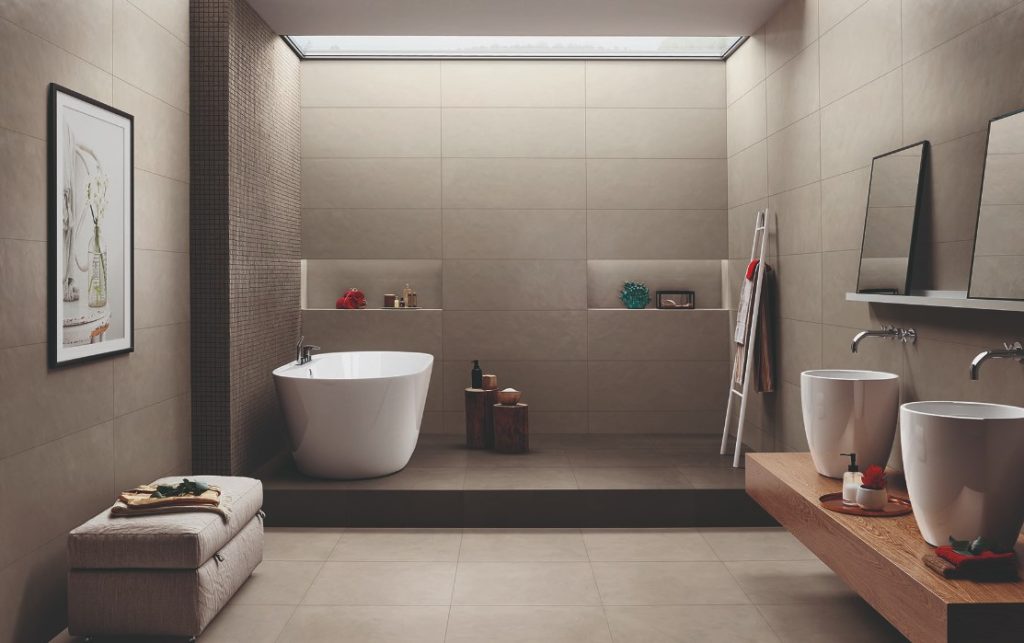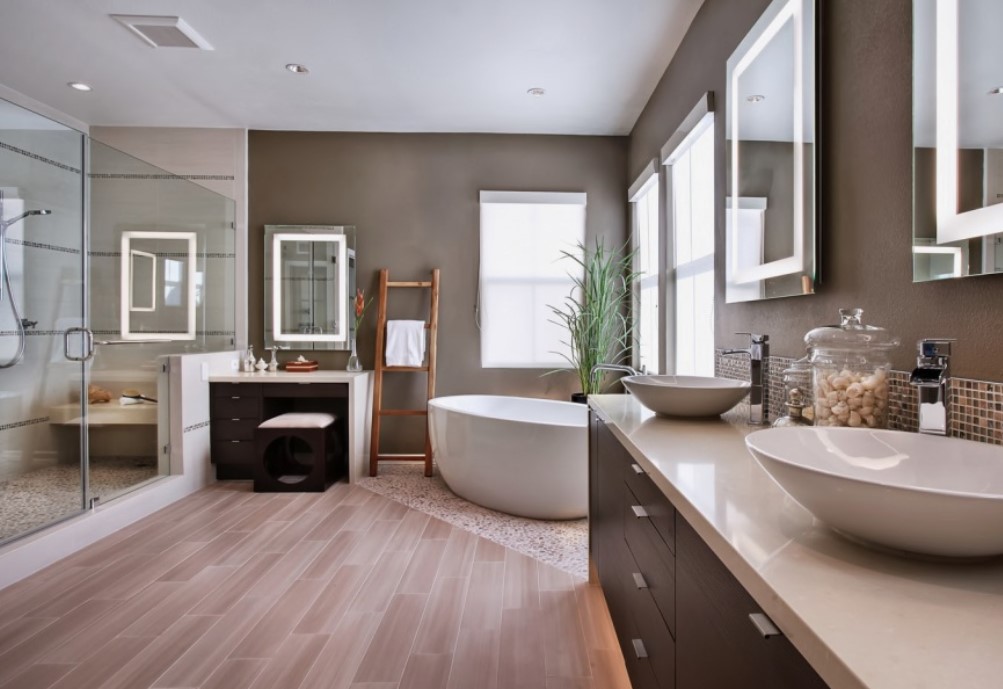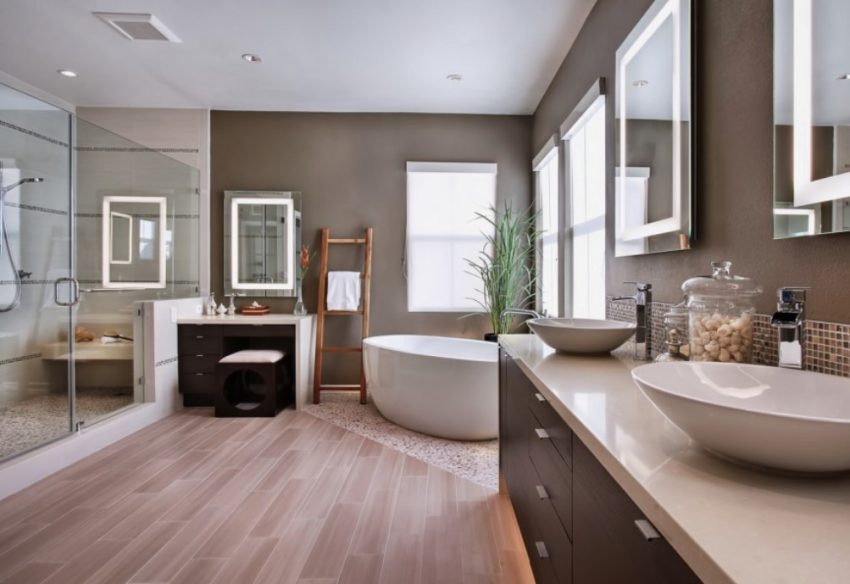There’s nothing quite like soaking in a warm bath after a long day. The experience can be deeply relaxing, allowing you to unwind, read a book, or simply enjoy the soothing water. However, to truly maximize this experience, it’s essential to choose a bathtub that meets your specific needs and preferences. This article will guide you through the key considerations for selecting the perfect bathtub, including material, shape, size, and additional features available at RAK Ceramics Online.
Materials: Understanding Your Options
Bathtubs come in a variety of materials, each with its unique advantages and disadvantages. Here are some of the most common options:
Cast Iron
Pros:
- Excellent heat retention, keeping the water warm for longer periods.
- Durable and long-lasting.
Cons:
- Very heavy, making installation more challenging.
- Typically more expensive than other materials.
Overview: Cast iron bathtubs are the classic choice, known for their durability and ability to maintain water temperature for extended periods. These tubs are coated with enamel, giving them a smooth, glossy finish that’s easy to clean. Despite their weight and higher cost, their longevity and superior heat retention make them a worthwhile investment for many homeowners.
Steel
Pros:
- Much lighter than cast iron, simplifying installation.
- Generally less expensive.
Cons:
- High thermal conductivity causes the water to cool down quickly.
- Can be noisier when filling with water.
Overview: Steel bathtubs are often chosen for their affordability and ease of installation. They are usually coated with enamel, similar to cast iron tubs, but they cool down faster due to steel’s high thermal conductivity. While they might not retain heat as well, they are a practical option for those looking for a cost-effective and lightweight solution.
Acrylic
Pros:
- Lightweight and easy to install.
- Good heat retention, although not as high as cast iron.
- Surface is less prone to staining and easier to maintain.
Cons:
- More susceptible to scratches and dents.
- Can feel less solid compared to cast iron or steel.
Overview: Acrylic bathtubs are popular for their versatility and ease of maintenance. They come in a wide range of shapes and sizes, making them suitable for various bathroom layouts. Their lightweight nature simplifies installation, and they offer decent heat retention. However, they require careful handling to avoid scratches and dents.

Quaryl
Pros:
- Combines the durability of quartz with the versatility of acrylic.
- High strength and wear resistance.
- Retains heat well and is easy to maintain.
Cons:
Can be more expensive than acrylic.
Overview: Quaryl is a composite material that blends quartz and acrylic, resulting in a strong, durable bathtub with excellent heat retention. These tubs are highly resistant to scratches and wear, making them a long-lasting choice. Quaryl bathtubs offer the aesthetic and functional benefits of acrylic with added durability.
Ceramic
Pros:
- Sturdier than acrylic and typically lighter than cast iron.
- Offers a luxurious and stylish appearance.
Cons:
- Requires regular maintenance to keep the surface pristine.
- Generally more expensive.
Overview: Ceramic bathtubs provide a luxurious and elegant look, often found in high-end bathrooms. They are more durable than acrylic and offer a unique aesthetic appeal. However, they require careful maintenance to avoid chipping and staining. Despite their higher cost, they are a preferred choice for those seeking a stylish and sophisticated bathtub.
Wood
Pros:
- Provides a unique and natural aesthetic.
- Excellent thermal properties, offering a warm and inviting bath experience.
Cons:
- Requires regular maintenance to prevent damage from water and humidity.
- Can be quite expensive.
Overview: Wooden bathtubs offer a unique and natural aesthetic that can add a touch of rustic charm to any bathroom. They are excellent at retaining heat, providing a warm and inviting bathing experience. However, they require regular maintenance to prevent damage from water and humidity, and they can be quite costly.
Shapes: Finding the Right Fit
The shape of the bathtub is a crucial factor that impacts both functionality and aesthetics. Here are some common shapes to consider:
Rectangular
Versatility: Suitable for most bathrooms.
Sizes: Available in a wide range of sizes, from 100 to 200 cm in length and up to 130 liters in volume.
Overview: Rectangular bathtubs are the most common and versatile option, fitting well in various bathroom layouts. They come in numerous sizes, making them suitable for both small and large bathrooms. Their straightforward design ensures they complement most interior styles.

Square
Space: Ideal for larger bathrooms due to their dimensions.
Materials: Commonly made from acrylic or artificial stone.
Standard Size: Typically around 150×150 cm.
Overview: Square bathtubs offer a unique and modern look but require more space. They are perfect for spacious bathrooms and provide ample room for bathing. These tubs are often made from materials like acrylic or artificial stone, adding to their contemporary appeal.
Corner
Space-Saving: Perfect for small bathrooms.
Orientation: Can be left or right-sided, and symmetrical or asymmetrical.
Customization: Helps optimize space in rooms with unique layouts.
Overview: Corner bathtubs are designed to fit into the corner of a bathroom, making them a great space-saving option. They come in various orientations and sizes, allowing for customization based on the bathroom layout. These tubs are ideal for maximizing space in smaller bathrooms.
Polygonal
Exclusivity: Rare and suitable for spacious, luxury bathrooms.
Installation: Can be wall-mounted or built into a podium.
Overview: Polygonal bathtubs are a luxurious and unique option, suitable for large and opulent bathrooms. They can be wall-mounted or built into a podium, adding a touch of exclusivity and elegance to the bathroom. These tubs are often chosen for their distinctive shape and aesthetic appeal.
Asymmetrical
Design: Ideal for unique and custom bathroom designs.
Customization: Often made to order, with materials and features chosen by the customer.
Overview: Asymmetrical bathtubs are designed for unique and custom bathroom layouts. They are often made to order, allowing for complete customization of materials and features. These tubs are perfect for creating a special atmosphere and adding a touch of individuality to the bathroom.
Oval and Round
Aesthetics: Offers a stylish and modern look.
Comfort: Sizes like 170×70 cm are ideal for a comfortable, half-lying position.
Overview: Oval and round bathtubs provide a modern and stylish look. They are designed for comfort, with sizes like 170×70 cm being ideal for a relaxed, half-lying position. These tubs are perfect for adding a touch of sophistication to the bathroom.
Semicircular
Space Efficiency: Designed to save space while offering increased volume.
Installation: Typically placed against a wall.
Overview: Semicircular bathtubs are designed to save space while offering increased volume. They are typically placed against a wall, making them an efficient option for smaller bathrooms. These tubs provide a modern and practical solution for maximizing space.
Triangular
Design: Resembling an isosceles triangle, they are a type of corner bathtub.
Materials: Commonly made from acrylic due to its flexibility, but also available in steel or quaryl.
Overview: Triangular bathtubs, resembling an isosceles triangle, are a type of corner bathtub. They are often made from acrylic due to its flexibility, but are also available in steel or quaryl. These tubs are perfect for adding a unique and modern touch to the bathroom.
Key Factors to Consider
When selecting a bathtub, keep these additional factors in mind to ensure optimal comfort and functionality:
Height of the Sides
Optimal Height: Typically between 65 to 70 cm.
Accessibility: Consider lower heights if you have children, elderly family members, or people with disabilities.
Bowl Depth
Coverage: Ideal depth is between 50-60 cm to ensure the water covers the person lying in the bath.
Length and Width
Personal Fit: For individuals 160-180 cm tall, a width of 70-80 cm and length of 150-180 cm is often suitable.
Bathroom Size: Ensure the bathtub fits comfortably within your bathroom space.
Installation Method
Wall-Mounted: Attached to the wall, suitable for most bathrooms.
Free-Standing: Placed in the center of the room, ideal for spacious bathrooms.
Built-In: Integrated into a podium or a pre-prepared base.
Wall Thickness
Durability: Thicker walls generally indicate a stronger and more durable bathtub.
Additional Features
Hydromassage and Air Massage: For added relaxation and therapeutic benefits.
Water Level Sensors: For safety and convenience.
Style and Color
Aesthetics: Choose a bathtub that complements the overall design and color scheme of your bathroom.
Premium Bathtub Options
For those in the UAE looking for high-quality bathtubs, RAK Ceramics Online offers an excellent selection. One luxurious option is the RAK-CLOUD freestanding bathtub, available in matte white, measuring 1400x758x560 mm. This elegant piece is priced at AED 8192.10 per unit and promises to elevate your bathing experience.
Choosing the perfect bathtub involves considering various factors, from material and shape to additional features and style. By carefully evaluating these elements, you can find a bathtub that not only enhances your bathroom’s aesthetics but also provides the ultimate relaxation experience.
Detailed Considerations for Specific Needs
For Families with Children
If you have young children, consider a bathtub with lower sides for easier access. A non-slip surface is also a crucial feature to prevent accidents. Look for bathtubs with built-in seating areas or ledges that make it easier to bathe young children safely.
For the Elderly or People with Disabilities
Accessibility is key when choosing a bathtub for elderly individuals or those with disabilities. Walk-in bathtubs with doors that open and close securely can be an excellent option. These tubs often come with built-in seats, grab bars, and non-slip surfaces to ensure safety and comfort.
For Spa-Like Luxury
For those looking to recreate a spa experience at home, consider bathtubs with advanced features like hydrotherapy jets, chromotherapy lighting, and built-in speakers for a multi-sensory experience. Freestanding tubs made from high-end materials like copper or marble can add a luxurious touch to your bathroom.
For Eco-Conscious Homeowners
Eco-conscious homeowners may prefer bathtubs made from sustainable materials. Look for options made from recycled materials or those that require less water to fill. Certain manufacturers offer bathtubs designed to be energy-efficient, maintaining water temperature longer and reducing the need for constant heating.
For Small Bathrooms
In small bathrooms, space efficiency is paramount. Consider compact, corner, or wall-mounted bathtubs that maximize available space without compromising on comfort. Built-in storage solutions or shelving around the bathtub can also help keep the bathroom organized and clutter-free.
Installation and Maintenance Tips
Installation
Proper installation is critical to ensure the longevity and functionality of your bathtub. Here are some tips:
- Professional Installation: Always opt for professional installation to ensure the bathtub is securely and correctly installed.
- Support Structures: Ensure that the floor can support the weight of the bathtub, especially for heavier materials like cast iron or stone.
- Sealing and Waterproofing: Proper sealing and waterproofing are essential to prevent water damage and leaks.
Maintenance
Regular maintenance will keep your bathtub looking new and functioning well. Here are some tips:
- Regular Cleaning: Clean your bathtub regularly using appropriate cleaning agents. Avoid abrasive cleaners that can damage the surface.
- Inspect for Damage: Periodically check for any signs of damage, such as cracks or chips, and address them promptly to prevent further deterioration.
- Avoid Harsh Chemicals: Harsh chemicals can damage the finish of your bathtub. Use gentle, non-abrasive cleaners instead.
Conclusion
Choosing the perfect bathtub involves a careful consideration of various factors, including material, shape, size, additional features, and specific needs. By understanding the advantages and disadvantages of different materials and shapes, and considering your unique requirements, you can find a bathtub that not only enhances your bathroom’s aesthetics but also provides the ultimate relaxation experience. Whether you’re looking for a simple, functional bathtub or a luxurious, spa-like retreat, there’s a perfect option out there for everyone.

I specialize in administrative technologies and am responsible for training other employees to use advanced systems and applications, including accounting software, mass communication procedures and organizational applications
